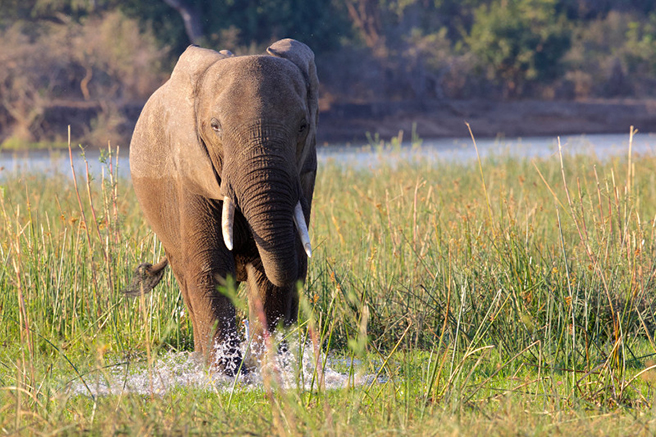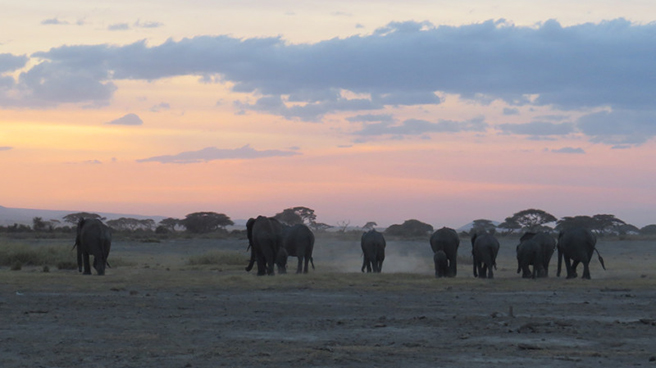The Magic of the Elephants

I am amazed at how many people still turn their heads to the poaching crisis. Why should we care if elephants fall of the face of the earth? Just one more species bound for extinction...that's life. Survival of the fittest, right? Wrong!
Firstly they are a keystone species. The role that a keystone species plays in its ecosystem is analogous to the role of a keystone in an arch. While the keystone is under the least pressure of any of the stones in an arch, the arch still collapses without it. Similarly, an ecosystem may experience a dramatic shift if a keystone species is removed,. Thus without elephants the grasslands actually cease to exist as grasslands.
Consequently, elephants are also required to maintain species diversity within forests. Without elephants to disperse seeds, some 30 percent of the tree species will probably disappear, significantly changing the character of the forest. Their disappearance would trigger the loss of other resident species, and the intricate connections among the remaining residents begin to unravel In a "domino effect. Elephants, then, are key to maintaining these habitats and ensuring the long-term survival of the other organisms that are adapted to live in these places.
Secondly, and most importantly they are magical.
They use high-pressure infrasound to open spatial experience (far beyond our limited capabilities). Elephants communicate through low frequency sounds called "rumbling," as a means of communication and can make a very wide range of sounds (10 octaves). They also communicate through seismic vibrations produced by impacts on the earth's surface or acoustical waves that travel through it.
They appear to rely on their leg and shoulder bones to transmit the signals to the middle ear. When detecting seismic signals, the animals lean forward and put more weight on their larger front feet; this is known as the "freezing behavior". The cushion pads of the feet contain cartilaginous nodes and have similarities to the acoustic fat found in marine mammals like toothed whales and sirenians therefore suited for seismic communication. Their feet are also covered in a soft padding that helps uphold their weight ((8,800-15,400 lb.), prevent them from slipping, and dull any sound.

Therefore elephants can walk almost silently—they're ninjas as well! Unlike most mammals, which grow baby teeth and then replace them with a single permanent set of adult teeth, elephants are polyphyodonts that have cycles of tooth rotation throughout their lives. The chewing teeth are replaced six times in a typical elephant's lifetime. Unlike in most mammals, teeth are not replaced by new ones emerging from the jaws vertically. Instead, new teeth grow in at the back of the mouth and move forward to push out the old ones.
The elephant trunk has more than 40,000 muscles in it. They wave their trunks up in the air, from side to side to smell better, to sense the size, shape and temperature of an object, and to breathe like a snorkel in deep water. And yes...they swim. They can swim a straight 30 miles a day—whole herds can swim a straight 300 miles going to more fertile feeding grounds.
To top it all off..."They possess the quality of mercy. They rescue trapped creatures at considerable cost to themselves, and if by chance they see a man wandering in the desert, they offer to lead him to familiar paths. Or if they encounter herds of cattle huddled together, they make their way carefully and peaceably lest their tusks kill any animal in their way,” wrote Aberdeen Bestiary, 1200 AD.
They respect their dead and have death rituals. There are stories of the herds of elephants retrieving poached bones and returning them to the place of death to bury them.
The earliest known ancestors of modern-day elephants evolved 65 million years ago. Their species has survived countless eras. And we are annihilating them. We are the culprits in the extinction of this remarkable species. Survival of the fittest? Wrong. We are cheats in this game.
Show your support and donate to AWF today to help them in the fight for elephants, for magic!
